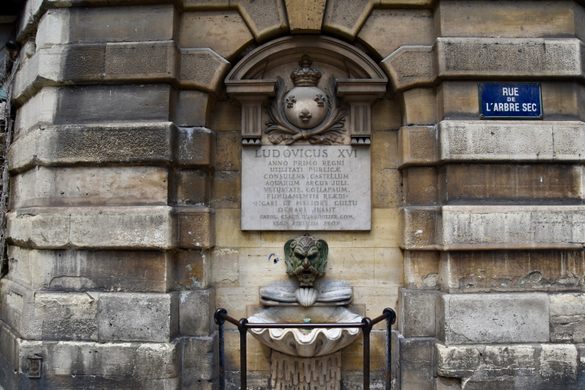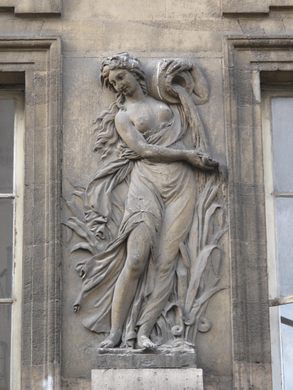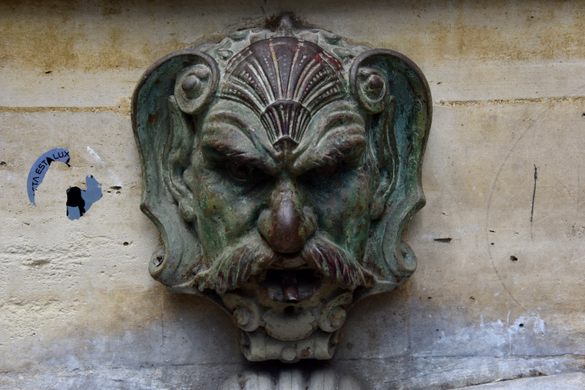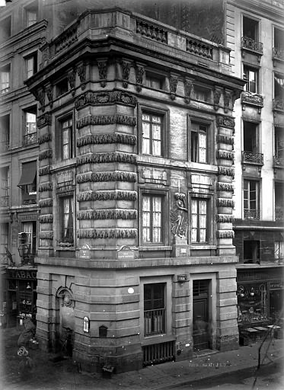AO Edited
Fontaine de la Croix-du-Trahoir
Executions were once held near this beautiful 18th-century fountain.
The spot where Rue de l’Arbre-Sec meets Rue Saint-Honoré in the 1st Arrondissement was once one of the busiest crossroads in Paris. Today a beautiful fountain, known as the Fontaine de la Croix-du-Trahoir, occupies the now-quiet street.
Built in 1775, the current fountain decorates the façade of the former Andorran consulate. Architect Jacques-Germain Soufflot designed the fountain. Above it, a plaque mentions that Louis XVI ordered Charles Claude d’Angiviller to repair the “water tower of Julian’s Arch.” The current fountain replaced architect Jean Goujon’s older 1529 fountain, though an even older medieval fountain likely stood here before that. Soufflot borrowed the modern fountain’s nymph relief design from Goujon’s earlier work.
Up until 1698, the spot where the Fontaine de la Croix-du-Trahoir now sits was an execution ground. Traitors, counterfeiters, and Lutherans were beheaded or sometimes even burned alive as the public watched. A cross, or croix as the name suggests, once stood next to the fountain where the condemned could say any final prayers they might have. The cross was later destroyed during the French Revolution.
If you have some knowledge of the French language, you may be wondering what trahoir means. Reportedly, it is a corruption of tiroir, “drawer,” because merchants used to lay out fabric for sale in front of the fountain.
Though it is far from famous, Victor Hugo made a brief reference to the fountain in his 1831 novel The Hunchback of Notre-Dame.
















Follow us on Twitter to get the latest on the world's hidden wonders.
Like us on Facebook to get the latest on the world's hidden wonders.
Follow us on Twitter Like us on Facebook